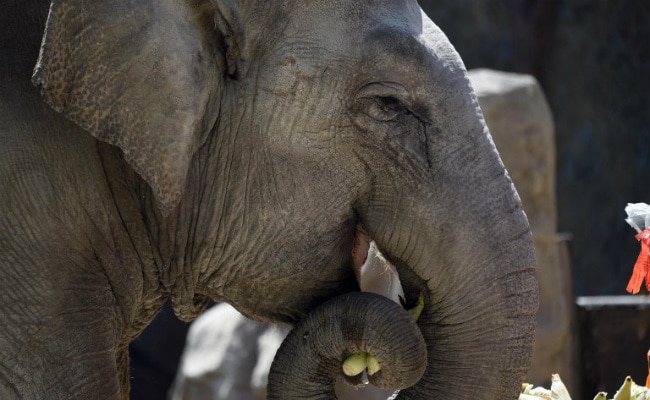
India is a biodiversity hotspot. Very few countries in the world can rival India's mega biodiversity. We are also ethno-culturally one of the richest countries in the world. Deep reverence to nature and wildlife is a common thread across different communities in India. Wildlife conservation is ingrained in our ethos and has always been an integral part of Indian tradition. Our deep-rooted connection with nature is the reason why India is harbouring the largest population of two charismatic species - tigers and Asian elephants.
On World Elephant Day, a reflection of the importance India attaches to elephants is found in the fact that we treasure it as our National Heritage Animal. It is a matter of pride for us to have more than 60% of the total wild population of Asian elephants in India. More importantly, the elephant population in the country continues to be stable. Under the Narendra Modi-led government, the number of elephant reserves has also gone up to 33 and the area under Project Elephant has risen from 76,508 sqkm to 80,777 sqkm, particularly over the last decade. India places elephants in Schedule-1 of the Wildlife (Protection) Act, 1972, according the highest degree of legal protection to both populations in the wild and elephants under human care.
Beyond their religious and cultural impact, it is worth noting that the evolution of elephants is very similar to that of humans. Both humans and elephants evolved around the same time in ancient Africa before colonising most of the world. It is often said that prehistoric humans often followed the trail left by prehistoric elephants to reach new places. Thus, elephants and people have a longstanding relationship. This bond has acquired a deeper essence and understanding in India.
The social behaviour of elephants has also evolved remarkably similar to that of humans. The elephant is a social animal. They live in herds, except lone tuskers. The elephant's society is matriarchal and the herds are mostly led by the oldest female in the group. They share strong bonds, especially when it comes to protecting young calves. The mother elephant, along with other female elephants, has been seen encircling the young ones to guard against looming threats or in the presence of large carnivores.

Elephants live long and possess evolved and strong olfactory and acoustic senses. They are said to have the 'elephantine' memory as well. Widely known for expressing their grief or trumpeting happiness in celebrations, elephants are emotional too. It is heart-warming to see them bathing in water bodies, enjoying mud showers and wallowing in swamps. Watching the playful young ones and erratic lone tuskers is also a delight.
It is important to recognise the impact of elephants in the lives of innumerable flora and fauna in the forests and various other ecosystems such as grasslands and wetlands. While moving from place to place in search of food and water, elephants invigorate the life cycles of thousands of trees, shrubs, herbs, insects, and associated mega herbivores - the reason why they are called engineers of ecosystems. Elephants have far larger implications for our ecosystems and are the true keystone species responsible for conserving our biodiversity.
Fortunately, India has more than 25,000 elephants in four major regions - South, North-Western, Central-Eastern and North-Eastern - of their inhabitation. The southern region has the largest population - around 12,000 - followed by the northeast region that has over 10,000 elephants.

Several important elephant habitats in the country have been notified as elephant reserves. A total of 33 elephant reserves have been notified in the country over an area of 80,777 square km spread across 14 states. Led by Prime Minister Narendra Modi, the Ministry of Environment, Forest and Climate Change, in coordination with the state forest departments, has ground validated 150 elephant corridors across 15 elephant-range states in the country and has informed the state governments and Union Territory administrations to take necessary steps to protect and conserve the elephant corridors. The ministry has taken steps to strengthen the management of elephant reserves by piloting a management effectiveness evaluation in four reserves and establishing a framework for conservation, which will drive scientific and professional management of India's elephant reserves.
Since elephants and people share space, their harmonious coexistence is crucial for long-term survival of the species. Reconciling human welfare along with the conservation needs of elephants assumes priority. The Modi government has placed emphasis on janbhagidari (public participation) in every aspect of elephant conservation. The government believes active participation of local communities is key to steering elephant conservation to new heights. All of us here have a collective responsibility towards ensuring elephant welfare.
It is often said, rightly so, that one cannot imagine India without elephants. With the collective efforts of all stakeholders, the Modi government is striving towards securing a viable population of elephants and other wildlife species for future generations.
(Bhupender Yadav is the Union Minister of Environment, Forest and Climate Change)
Disclaimer: These are the personal opinions of the author


